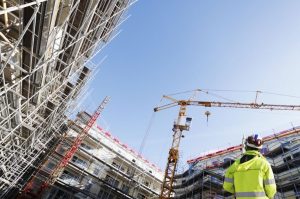What does the future hold for green leases?

Jonathan Kay, senior associate solicitor in the Real Estate team at Blacks Solicitors, shares his thoughts on what green leases mean for the future of real estate legislation and why they’re integral to making the sector more sustainable.
Up until the Conservative Party conference last autumn, it had been a clear government aim to decarbonise all sectors of the UK economy by 2050. Chancellor Jeremy Hunt announced the setting up of an Energy Efficiency Taskforce with the aim by 2030 of reducing energy consumption from buildings and industry by 15 percent.
In 2015, the Minimum Energy Efficiency Standards (or MEES) regulations were passed, which introduced ever-tightening regulations. Under these, it used to be that a landlord was prohibited from granting a lease of a property with an EPC rating below “E”. Since 1 April 2023, that position has tightened so that landlords are no longer permitted to continue to let a property below “E”. It’s also worth mentioning that the government consulted in 2021 on raising the threshold, so that the minimum rating by April 2027 will be “C” and by April 2030 will be “B”.
More recently, there has been a watering down of the government’s position on net-zero. Domestic MEES is off the table, the Energy Efficiency Taskforce has been scrapped and there has been no further update on raising the minimum EPC rating threshold since the 2021 consultation. The looming general election only adds to the uncertainty of what legislation may be around the corner. The Labour Party has made promises at its party conference for cleaner energy but, as yet, it hasn’t committed to compulsory upgrading of properties to make them more sustainable.
All of this means that, so far as legislation is concerned, it is unclear as to what can be expected. However, if the property sector and UK in general is to meet its net-zero target, it is clear that further action is needed. According to the UK Green Building Council, 40 percent of the UK’s total greenhouse gas emissions come from the built environment. It is estimated that 80 percent of buildings that will exist in 2050 have already been built, which illustrates how significant a role the property sector is going to play in the drive to net-zero, highlighting that the bulk of the savings are going to have to come from existing stock. With the more recent slowing down of regulation, it is arguably the market which is now stepping in to fill the vacuum and is driving the pace forward.
Green issues are, therefore, becoming an increasingly important part of the landlord and tenant relationship, but it is worth mentioning that green leases are nothing new and there is no market standard. The market is still working it out to a degree and, clearly, what is appropriate is going to depend on asset class and sector, as well as the specific building requirements and the motivations of the parties involved.
There is also a distinction between what are viewed as “light green” and “dark green” provisions. Broadly speaking, “dark green” provisions are those which have more stringent requirements and require a more significant level of commitment towards environmental issues. “Light green” provisions require less commitment so, for example, might be more aspirational in nature.
The specific provisions of any green lease will therefore depend on whether the parties take a “light green” or “dark green” approach, but some key areas and considerations are likely to be as follows:
- Alterations – How restricted should the tenant be in carrying out works to the Property in order to limit impact on the environment?
- Service Charge – How should cost be apportioned between the landlord and tenant in relation to capital expenditure for improving environmental performance of the building? It has long been a complaint of landlords that they are responsible for ensuring their building meets energy efficiency standards whilst tenants benefit from the lower energy costs. How can this “split incentive” be curtailed?
- Yielding Up – How can the environmental impact of carrying out works to strip-out alterations be balanced with the Landlord’s requirements for re-letting?
- Co-operation – How far should the parties be under an obligation to cooperate in order to find ways to improve sustainability?
The final point of cooperation is important as the key to having a successful green lease is collaboration. Whilst the specific provisions of green leases may differ from building to building, it will be essential for landlords and tenants to work together if the property sector is going to do its part in reaching net-zero.







